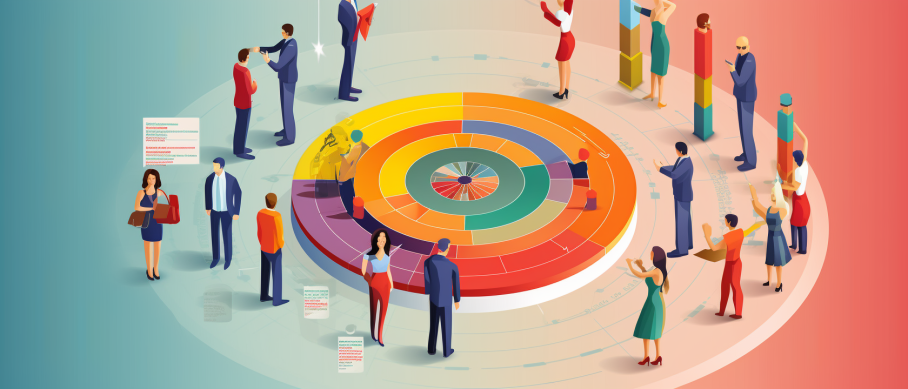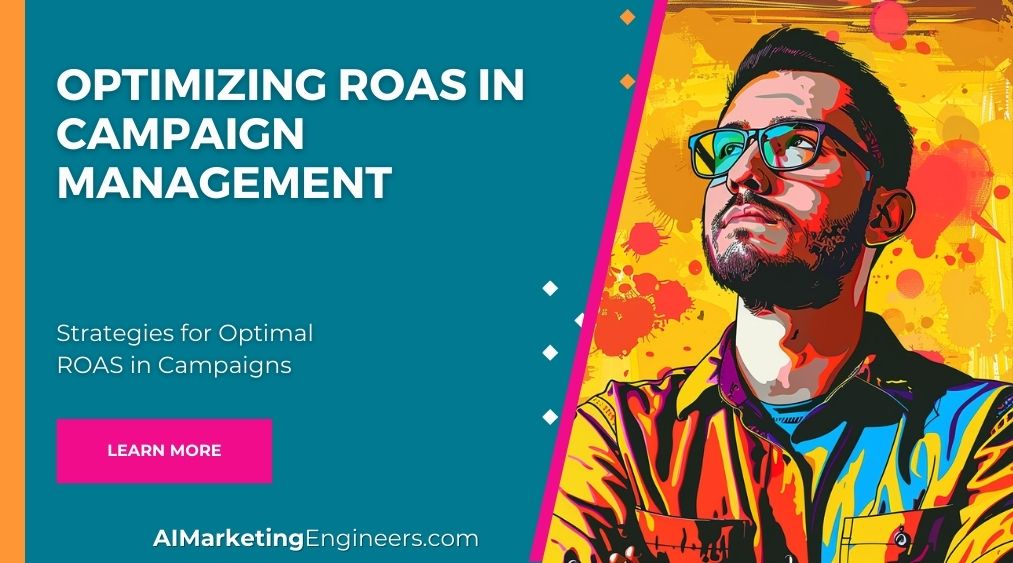Key Takeaways
✅ Understanding customer segments: Get to know your customers' what's and why's. Recognizing the various groups within your customer base helps tailor your approach. This isn't just about who they are, but about what makes them tick, helping you to boost retention and spur advocacy.
✅ Targeted messaging and personalization: Imagine speaking directly to each customer's interests. Crafting messages that click with different segments isn't just nice—it's necessary. It can be the difference between a brush-off and a sale, ramping up conversions and fattening that bottom line.
✅ Data analysis and continuous optimization: Ever feel like you're shooting in the dark with your marketing? Using data to light the way means constantly adapting, staying nimble, and ensuring your segmentation hits the mark. It's not a one-and-done deal; it's an ongoing quest to outdo yourself.

Introduction
Are you ready to transform your business from just making noise to striking a chord with each customer? Mastering customer segmentation and targeted strategies can be the key to unlocking a symphony of engagement. It's about understanding not just the broad strokes of your customer base, but the delicate details that define their individual needs and desires.
By diving into this article, you'll leap into a world of modern marketing where personalization is king and data is your crown jewel. We're talking cutting-edge methods and real-life success stories that illustrate how sharp, segmented strategies can send your engagement soaring. Get ready for actionable insights that will make you question everything you thought you knew about your audience. Let's embark on this journey to discover just how mastering customer segmentation can become your brand's newest superpower.
Sure thing, let's talk numbers! But not just any numbers—these are the kind of stats that have the power to change the way we reach out to our customers. So grab a coffee, and let's dig into these interesting figures that could very well shape your next big move in customer segmentation.
Top Statistics
| Statistic | Insight |
|---|---|
| Customer Analytics Market Growth: Expected to climb from $8.1 billion in 2020 to $24.5 billion by 2025, cruising at a CAGR of 22.9%. (Source: MarketsandMarkets) | This explosive growth just goes to show how essential it is for businesses to understand and predict customer behavior to stay ahead of the curve. |
| Consumer Expectations: A whopping 66% of consumers expect brands to get their individual needs and anticipations. (Source: Salesforce) | It’s clear as day, folks - if you’re not tailoring your approach to meet these personal needs, you might as well be invisible to two-thirds of your potential market. |
| Accenture's Findings: A striking 91% of shoppers are more likely to give their bucks to brands who recognize, remember, and provide relevant offers and recommendations. (Source: Accenture) | Knowing your customers like the back of your hand isn't just good service, it's the cornerstone of business growth in this day and age. |
| AI in Personalization: Predicted that, by 2023, 75% of B2C marketers will have invested in AI-based personalization engines. (Source: Forrester) | Artificial intelligence isn't just a buzzword; it's a powerhouse driving personalized experiences that could make or break customer loyalty. |
| Composable Business Model: Gartner projects by 2023, 40% of businesses will have hopped on to a "composable" approach to quickly adjust to customer demands and market shifts. (Source: Gartner) | Being flexible and adaptable is the new trend - businesses that mold themselves to what their customers want are the ones who will thrive. |
Understanding Customer Segmentation
Imagine walking into a party where you don't really know anyone. Would you start conversations with random topics, or would you try to find out a bit about the people there to strike up meaningful conversations? That’s what customer segmentation is all about in the world of marketing. It’s understanding your customers so well that you can talk to them about the things they care about the most. The key is to divide your audience into groups based on things like age, shopping habits, or where they live—this helps you to not just reach out to your customers but to really connect.
Methods for Identifying Customer Segments
So how do we break down our customers into these neat little groups? You could sort them by demographic details like age or gender, or you might dive into their psychographic traits, which are their interests, values, or lifestyles. Then, there's behavior — are they loyal customers, or do they just stop by during the big summer sale? And let's not forget where they're from — geographic segmentation. To figure all this out, you need to be a bit of a detective, gathering data from surveys, sales records, or even social media. Analyzing this data will lead you to find some interesting patterns that will be golden for your marketing strategy.
Creating Targeted Marketing Strategies
Once you've figured out your customer segments, it’s time to craft those personal messages that’ll strike a chord. For each group, you come up with a unique value proposition: a special reason why they should buy your product. If you’re talking to busy parents, maybe you offer a solution that saves them time. For young professionals? Something that boosts their career or social life. The trick is to make your message feel like it’s been handcrafted just for them — because, in a way, it has.

Personalization and Customer Engagement
Personalization is like giving your customer a secret handshake. It says, "I know you, I get you, and I value you." By using a customer's name or recommending products based on past purchases, you make each interaction feel special. This fosters deeper customer engagement, keeps them coming back, and increases the chances they'll tell their friends about you. Measure how they respond — what works, what doesn't — and use that feedback to make your strategies even more spot-on.
Analyzing and Refining Segmentation
It’s not enough to set up your segments once and call it a day; this process needs some serious TLC over time. Keep an eye on your customer metrics: are they still responding well to the messaging? Have new patterns emerged? Adjust your segments as needed — maybe new products have brought in different types of customers, or perhaps the market has shifted. The more up-to-date your segmentation is, the better you can keep serving your customers exactly what they want.
Case Studies and Best Practices
Real-world examples bring these ideas to life. Companies like Netflix and Amazon are pros at using customer data to suggest shows or products you might like. They look at what you've watched or bought before and what people like you enjoy, and voila — personalized recommendations that often hit the mark. Learning from these best practices, stay curious about your own data, always keeping an eye out for ways to make those customer relationships stronger and more rewarding.

Emerging Trends in Customer Segmentation
As you look ahead, technologies like artificial intelligence and machine learning are changing the game. They can sift through mountains of data in the blink of an eye, predicting what customers might want before they even know it. Keeping up with these trends ensures your customer segmentation strategy stays sharp and effective, so you can keep those party conversations going strong — making each of your customers feel like the guest of honor.
AI Marketing Engineers Recommendation
Recommendation 1: Utilize Behavioral Data for Mastering Customer Segmentation: Focus on your customers' actions. What do they click on? When do they bounce off your site? Use data from your website analytics, email opens, and social media interactions to segment customers based on behavior. This isn't just about what they've bought; it's about how they interact with your content and your brand. For example, imagine you own an online store that sells sports equipment. By looking at data, you find a bunch of people who read articles about running but haven't bought running shoes from you. Maybe it's time to send them a targeted offer or some useful tips about choosing the right shoes, which might just nudge them into purchasing.
Recommendation 2: Leverage AI for Predictive Analytics in Segmentation Strategies: Stay ahead of the game by using the power of AI. It can process heaps of data and pick up on trends faster than any human. By forecasting what customers might want or need in the future, you can tailor your marketing strategies accordingly. Right now, AI can predict who's more likely to buy certain items, how much they're willing to spend, or what kind of advertising copy resonates with different segments. Think about a local coffee shop. The owner might notice through predictive analytics that a lot of office workers grab a coffee between 8-9 AM. They could start a 'Rush Hour Special' to draw in even more people during that time.
Recommendation 3: Employ Personalization Engines for Dynamic Customer Segmentation: Personalization isn't just a buzzword; it's a powerhouse for engagement. Use a personalization engine to dynamically segment and target your audience in real-time. These tools can tailor your website experience, recommend products, and adjust content to fit different visitor profiles. This tactic is more than just addressing someone by their first name in an email; it's about showing relevant content that matches their interests and past behavior. If someone always reads the blog posts about pet care on your website yet has never been shown your pet care products, they're a missed opportunity. Personalization engines can make sure the next time they come around, those products are front and center.

Relevant Links
- Unlock the Secrets of AI-Driven Customer Insights
- Boost Engagement: Personalize Your Strategy with AI
- Why Every Marketer Needs to Understand AI Ethics
- Innovative Marketing: How AI is Reshaping the Landscape
Conclusion
Well, we've journeyed through the ins and outs of customer segmentation, haven't we? Think of it as a roadmap to understanding the bunch of folks we call customers. Pretty essential stuff if you're keen on serving them just right. Remember, it's all about sending the right message to the right people at the right time. Can you imagine the power you hold when you *know* who's who in your market squabble?
By splitting the crowd into groups – whether by age, shopping habits, or even their favorite pizza toppings – we get to whisper sweet nothings (well, meaningful messages, actually) into the ears of those most likely to love what we've got. It's like setting up a coffee date, but instead of coffee, you're serving up tailored experiences. And it pays off, big time.
Now think about this: were those tailored marketing strategies we talked about not just an eye-opener? They help us reach out and touch someone's consumer heart without coming off as, you know… creepy. Instead of yelling into a megaphone and hoping for the best, we get to sit down, one-on-one, and really connect.
We've peeked at the future, too. Technology's not sitting still, and neither should we. As methods get sharper and data gets bigger, there's no telling the heights we'll hit with customer segmentation. But one thing's for sure, the more we chat with and listen to our customers, the brighter our brands will shine.
So here's to making our customers feel like the center of our business universe. Are you ready to get out there, gather some intel, and start crafting those perfect little worlds for each segment of your audience? Because let's be honest, there's no better way to their hearts – and their wallets – than showing them you know exactly what they want, even before they do.

FAQs
Question 1: What is customer segmentation, and why is it important?
Answer: Customer segmentation is dividing a customer base into groups sharing similar characteristics, behaviors, or needs. It's key for tailoring marketing efforts, boosting engagement, and enhancing customer satisfaction.
Question 2: What are the common types of customer segmentation?
Answer: The types you'll often see are demographic, geographic, psychographic, behavioral, and value-based. They each home in on different aspects like age, location, lifestyle, shopping habits, and customer's value to your business.
Question 3: How do I choose the right segmentation criteria for my business?
Answer: Go for criteria that match your goals, know your audience, and what data you have. Think about what your customers need, how they use your products, and the current trends shaking up the market.
Question 4: How does customer segmentation improve marketing efforts?
Answer: Segmentation leads to more personal messages, promotions that hit the mark, and product offers that fit just right. This means more interest, better sales, and customers sticking around longer.
Question 5: What is the difference between customer segmentation and targeting?
Answer: Segmentation is splitting your customers up into groups. Targeting is about choosing which of those groups you’ll focus your marketing magic on.
Question 6: How can I use customer segmentation for cross-selling and upselling?
Answer: Get to know what each customer group needs and wants, and then offer products or extras that are on point. This can make selling additional items or upgrades more likely.
Question 7: How can I measure the effectiveness of my customer segmentation strategy?
Answer: Look at things like how much customers are getting involved, how many are buying, if they stick with you, and how much they spend. Then see how these numbers change once you start putting your segmentation to work.
Question 8: What tools and techniques can I use for customer segmentation?
Answer: Grab tools like Excel or Tableau, or even specialized software to sift through your customer data and find patterns. Fancy tech like machine learning and AI can take your segmentation to the next level.
Question 9: How can I ensure data privacy and security when implementing customer segmentation?
Answer: Stick to privacy rules like GDPR or CCPA, and have tight security to keep your customers’ data safe. Always ask their permission when you want to use their personal info.
Question 10: What are some best practices for implementing customer segmentation strategies?
Answer: Be clear on your business goals, collect data that matters, experiment with your strategy, and keep refining. Always keep an ear out for what your customers say and adjust your plans based on how they’re working out.

Academic References
- Kumar, V. & Shah, D. (2004). Customer Segmentation and Targeting: Critical Review of Literature and Implications for Research and Practice. Journal of Strategic Marketing, 12(1), 1-19. This foundational article undertakes a comprehensive review unravelling the nuances of ever-evolving customer segmentation and targeting strategies, highlighting how knowing customer needs and behaviors is key to the puzzle of engagement, and why the play of marketing mix strategies can't be ignored.
- Verhoef, P. C. & Donkers, B. (2010). The Role of Customer Segmentation in Building Customer Loyalty and Engagement. Journal of Marketing Management, 26(13-14), 1131-1146. Here's a provocative read that probes into how segmentation intertwines with customer loyalty like roots to a tree. It invites marketers to consider custom-tailored marketing suits for different customer segments to spur a lasting commitment.
- Choo, C. W. & Leong, S. M. (2010). Customer Segmentation and Targeting: A Literature Review and Synthesis. International Journal of Business and Management, 5(10), 19-30. This article sheds light on segmentation bases and methodologies, emphasizing that data isn't just numbers and graphs; it can be the compass that guides you through the challenging seas of segmentation and targeting. Moreover, it underscores the importance of staying agile – continuously monitoring and adapting your strategies to keep up with the pace of change.







